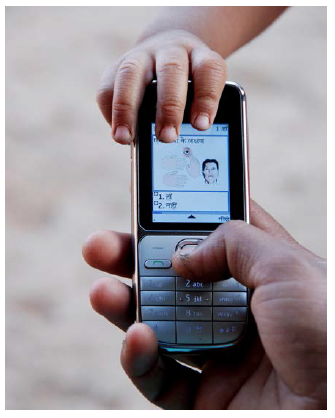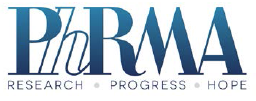Baxter Strives to Improve Health of Women and Children in India via Mobile App
Trending now: Pharma continues to support patients through mobile services.
 Baxter and the Baxter International Foundation, in conjunction with Bangalore’s Health Department and World Vision India, has launched a mobile health application that allows community health workers to better monitor the health status of underprivileged women, during and post-pregnancy, and the immunization of children ages 2 and under among 17 impoverished areas in Bangalore.
Baxter and the Baxter International Foundation, in conjunction with Bangalore’s Health Department and World Vision India, has launched a mobile health application that allows community health workers to better monitor the health status of underprivileged women, during and post-pregnancy, and the immunization of children ages 2 and under among 17 impoverished areas in Bangalore.
Sisu Janani Seva, also known as mHealth, is a mobile health application with video and audio features that allow health staff to provide essential healthcare information and counseling to women on an ongoing basis, thereby reducing possible health risks to the mother and baby. The mothers also receive counseling messages with multimedia features through the app, in addition to other vital healthcare information.
The new mobile application allows community health workers to easily access information remotely. In the first phase of the application’s launch, 12 members of the Junior Health Assistant Female staff and 24 accredited social health activist workers were trained to use the mobile health application. The project is expected to directly impact 3,000 pregnant women and 2,800 children among the 17 impoverished areas.
“Baxter’s efforts to increase access to healthcare extend beyond donations in underserved communities and the development of the mobile health application exemplifies our commitment to improving community health at the root level," says Anish Bafna, region head for Emerging Asia at Baxter. “This is a major step forward in ensuring women recognize when to seek medical care and improving overall household preventative health measures."
Boehringer Ingelheim’s 4WARD Coalition Launches Online Tool for Afib
AFib4WARD.com is designed to help patients better understand atrial fibrillation (AFib) and make informed treatment decisions with their healthcare providers. The Web-based tool includes resources to help promote a two-way conversation, empowering patients to be more informed, active decision makers in their treatment plans. The website was developed following the success of the 4WARD Conversation Cards, a tool developed after the coalition identified the need for shared decision-making resources in the AFib community. Since its launch in November, the Conversation Cards have been tested with healthcare providers across the country, with an overwhelming majority reporting the cards helped their AFib patients better understand their condition. Both the print and online versions of the cards are part of a broader initiative by the 4WARD Coalition, a multi-disciplinary collaboration of experts dedicated to improving the quality and consistency of care for patients needing anticoagulation treatment.
The 4WARD Coalition is a multi-disciplinary collaboration of experts launched by Boehringer Ingelheim Pharmaceuticals in 2015, dedicated to improving quality and consistency of care for patients needing anticoagulation treatment.
“Boehringer Ingelheim launched the 4WARD Coalition with the vision of identifying and addressing unmet patient needs in anticoagulation care," says Paul Fonteyne, president and CEO, Boehringer Ingelheim Pharmaceuticals. “We are thrilled with what the 4WARD Coalition has accomplished in under a year since its launch and we look forward to continuing our support of the coalition as it develops and brings these much-needed resources to patients and physicians."
Vermont First State to Adopt and Sponsor PatientPing to Enhance Medical Information Transparency
In April, Vermont became the first state in the nation to announce state-sponsored use of health information technology, PatientPing, across in-state healthcare providers. PatientPing aims to enhance medical information transparency between once disconnected healthcare providers by implementing an information sharing system that will cut across silos to improve patient care. Upon joining PatientPing, providers receive “pings," real-time notifications whenever their patients receive care at any facility that is a part of the national PatientPing community. At the facility where patients are getting care, providers receive care instructions that include contact information for others on the patient’s care team, as well as patient visit histories. By sharing this information in real time, providers can seamlessly coordinate their patients’ care. The program is supported by hospital admission, discharge, and transfer data from Vermont Information Technology Leaders (VITL), which manages the state’s health information exchange.
“Our state has come together in this partnership to launch a progressive initiative dedicated to improving the way Vermonters receive care," says Lawrence Miller, senior advisor, chief of healthcare reform at the Office of the Governor, State of Vermont.
“This new and innovative information sharing system will help support clinicians’ efforts to more effectively and efficiently deliver care."
Text Messaging Can Improve Results for Diabetes Patients
According to a study published in the Journal of Medical Internet Research in April, brief automated messages have the potential to support self-management and improve results in people with type 2 diabetes, but their effect compared with usual care is unclear.
Researchers identified 15 trials (15 interventions) most of which were delivered via short message service text messaging (n=12) and simultaneously targeted diet and physical activity (n=11). Nine interventions consisted of unidirectional messages, whereas six consisted of bidirectional messages, with patients receiving automated tailored feedback based on self-reported data. In 13 trials (1,155 patients) where data were available, there was a difference in glycated hemoglobin of -0.53% (95% CI -0.59% to -0.47%) between intervention groups compared with usual care. In five trials (406 patients) there was a non-significant difference in body mass index of -0.25 kg/m2 (95% CI -1.02 to 0.52). Interventions conducted in low- and middle-income countries showed a greater impact than those conducted in high-income countries.
In general, trials were not free of bias and did not use explicit theory. Larger, methodologically robust trials are needed to confirm these positive results.
Online Arthritis Diagnostic Solution
Belgian company DNAlytics upgrades its RheumaKit by including a mobile app to its original solution. The solution combines a sample collection and transportation kit, a centralized laboratory process to extract a transcriptomic signature from the patient sample, and a Web-based application with an embedded predictive model. The app will allow patients with rheumatic conditions to monitor their health status over time and to provide their clinician with the pertinent information on their condition. Conditions covered include rheumatoid arthritis, spondyloarthropathy, psoriatic arthritis, microcrystalline arthritis (gout), lupus (SLE), osteoarthritis, etc.
The app aims to reduce the frequency of visits to the rheumatologist (in agreement with the rheumatologist), detect earlier the failure/inefficacy of an ongoing treatment, and thus earlier adaptation of the therapeutic strategy. This mobile application can be connected to RheumaKit.com, a Web platform for personalized medicine in rheumatology to be used by the clinicians. The types of information that can be managed by the clinicians are related to treatment, to diagnosis or to disease activity and can include biological and even genomic testing.
Currently, the mobile application allows the follow-up of the user via three self-reported metrics: the simplified Health Assessment Questionnaire (HAQ-DI), the Routine Assessment of Patient Index Data 3 (RAPID3), recommended by the American College of Rheumatology (ACR), and the Knee Injury and Osteoarthritis Outcome Score (KOOS). These three indices allow for the monitoring of the disease activity.
IoT Healthcare Market Expected to Reach $136.8 Billion
According to the report World Internet of Things (IoT) Healthcare Market – Opportunities and Forecasts, 2014-2021, published by Allied Market Research, the world Internet of Things healthcare market is expected to reach $136.8 billion by 2021, registering a CAGR of 12.5% between 2015 and 2021.
The patient monitoring application segment is expected to maintain its lead position with $72.7 billion by 2021 and is projected to dominate the market throughout the forecast period. The patient monitoring segment covers in-patient hospitalized patients, remote patient monitoring, and tele-health services. High adoption of IoT services in remote patient monitoring and growing awareness among individuals would further foster the growth of patient monitoring segment.
Key findings of the study:
Devices are projected to be the fastest growing segment in the IoT healthcare market at a CAGR of 16.6% during 2015 and 2021.
Patient monitoring application segment is expected to continue to dominate the IoT healthcare market throughout the forecast period.
Healthcare providers — hospitals and doctors — and patients, the end-user segment would continue to lead the market, accounting for more than a three-fourth share in 2015.
Fitness and wellness measurement application segment is expected to grow at a CAGR of 15.7% during the analysis period.
Asia-Pacific is projected to be the fastest-growing region in IoT healthcare market, registering a CAGR of 17.0% between 2015 and 2021.
The North American Internet of Things (IoT) healthcare market is projected to offer beneficial growth opportunities during the forecast period due to a well established healthcare infrastructure, high patient awareness, increasing government supports, and high investment from major IoT players.
In North America, the United States dominates with maximum shares in IoT healthcare market. The key companies profiled in the report are Apple, Cisco Systems, GE Healthcare, Google (Alphabet), International Business Machines, Medtronic, Microsoft, Qualcomm Life, Proteus Digital Health, Koninklijke Philips, and St. Jude Medical.
PhRMA’s From Hope to Cures Features Cancer Survivors
 The Pharmaceutical Research and Manufacturers of America (PhRMA) has added new stories that highlight rare blood and lung cancer survivors to its From Hope to Cures campaign.
The Pharmaceutical Research and Manufacturers of America (PhRMA) has added new stories that highlight rare blood and lung cancer survivors to its From Hope to Cures campaign.
The latest video in the collection features Matt, who was diagnosed nearly seven years ago with advanced non-small cell lung cancer. When he was diagnosed he was given a slim chance of living up to five years. However, Matt continues to lead an active life due to recent advancements in targeted gene therapies and innovations in cancer medicines.
The latest print and digital ads feature Jamie, a vibrant woman diagnosed 15 years ago with chronic myelogenous leukemia (CML). Watching her son grow up was a primary focus for her, and she’s been able to continue to do that and so much more.
Thanks to advancements in CML treatments, today she maintains her sense of humor and imparts an infectious joy on those who meet her.
Earlier this year, the first collection of digital and print ads was released featuring Rhys, a 5-year-old living with type 1 diabetes and celiac disease. Unveiled alongside the advertising was a video, titled We’re Fighting Back, which features both Rhys and Jamie, as well as Jen, a researcher who wakes up every day working to find new treatments and cures for patients.
The collection of ads will continue to be featured in print, radio, digital, and social channels throughout the year.
Advertisements and promotion will run on a variety of platforms in Washington, D.C., and select states.
From Hope to Cures launched in January 2014 to highlight the value biopharmaceutical innovation provides to patients, society and the economy. The campaign website features stories of real patients and researchers, data, and information on fighting diseases and an interactive map showing the economic contributions of the industry.
To learn more about the campaign, visit fromhopetocures.org. (PV)



















